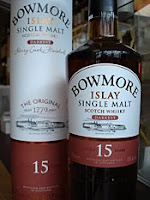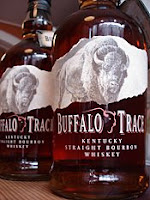 Port Ellen distillery has been closed for 25 years and the stocks of whisky produced there are getting less and less as time goes by. Originally built in 1825 on the island of Islay, the distillery had a chequered history. Now, it is renowned as one of the best and most sought after Islay whiskies and coupled with the dwindling stock, it is also one of the most expensive to buy. This contrasts with periods in the distillery's past, where it was deemed surplus to requirements and this includes a period of non-production of almost 40 years (between 1929 and 1967) and ultimately, it's closure in 1983. Most of the distillery has now been dismantled or demolished, although the malting facilities are still operating and supply malted barley to a number of other distilleries on the island. The maltings and most of the existing whisky stock are owned by drinks giant, Diageo and they occasionally release bottlings that are snapped up by collectors around the world. Independent bottling companies also hold some stock and some of these releases are more common and slightly cheaper. This bottling is released by Royal Mile Whiskies and is available only in their two shops in Edinburgh and London or via their website. A single cask has been bottled, so there are only 255 bottles available and they are available for £95 each. So you will have to be quick if you want to buy one!
Port Ellen distillery has been closed for 25 years and the stocks of whisky produced there are getting less and less as time goes by. Originally built in 1825 on the island of Islay, the distillery had a chequered history. Now, it is renowned as one of the best and most sought after Islay whiskies and coupled with the dwindling stock, it is also one of the most expensive to buy. This contrasts with periods in the distillery's past, where it was deemed surplus to requirements and this includes a period of non-production of almost 40 years (between 1929 and 1967) and ultimately, it's closure in 1983. Most of the distillery has now been dismantled or demolished, although the malting facilities are still operating and supply malted barley to a number of other distilleries on the island. The maltings and most of the existing whisky stock are owned by drinks giant, Diageo and they occasionally release bottlings that are snapped up by collectors around the world. Independent bottling companies also hold some stock and some of these releases are more common and slightly cheaper. This bottling is released by Royal Mile Whiskies and is available only in their two shops in Edinburgh and London or via their website. A single cask has been bottled, so there are only 255 bottles available and they are available for £95 each. So you will have to be quick if you want to buy one!The nose is gorgeous. It is smoky but quite subtle smokiness (the longer a whisky matures, then the less smoky it becomes) with sweet maltiness and a salty note coming through (it reminded me of sea air in a way). The smokiness is fragrant and quite earthy and mossy. On the palate, all of these elements are present and mix beautifully with something nutty, woody and there is a bitter element (iodine, which is a classic Islay characteristic). The finish is long and combines the smokiness, saltiness and sweetness almost perfectly, although it is a bit dry right at the end. This is a cracker and lives up to Port Ellen's reputation. It is complex yet quite light and delicate for something that has been aged for 25 years. If you ever get the chance to try any Port Ellen, then do not hestitate.








